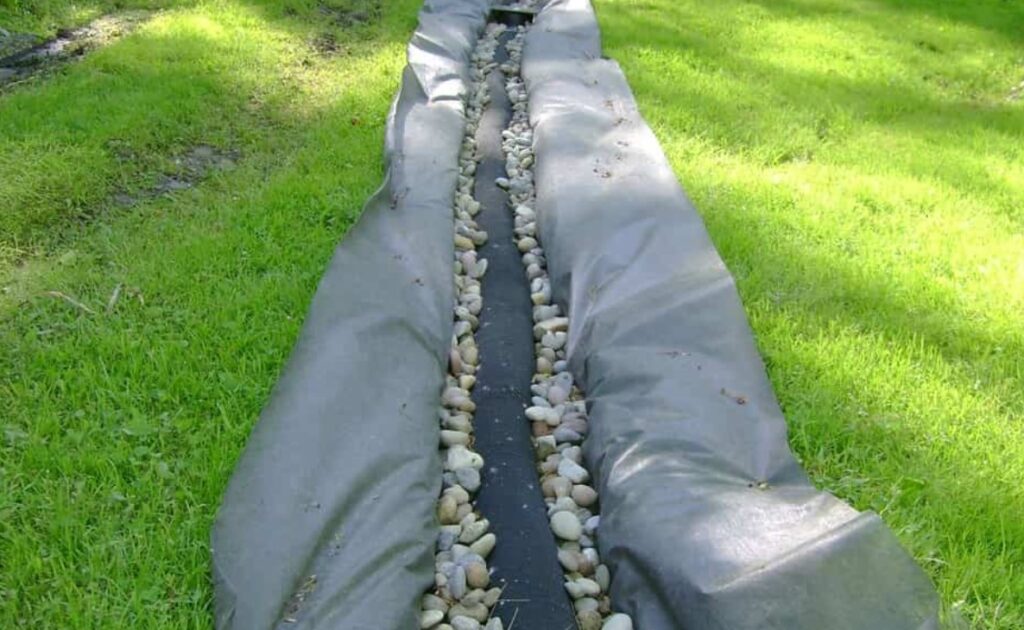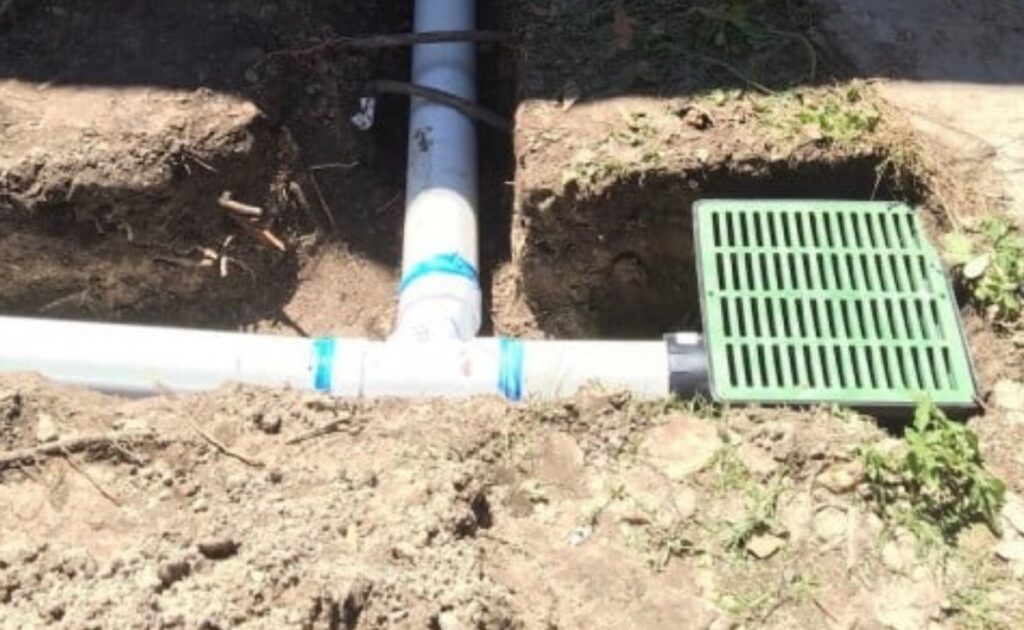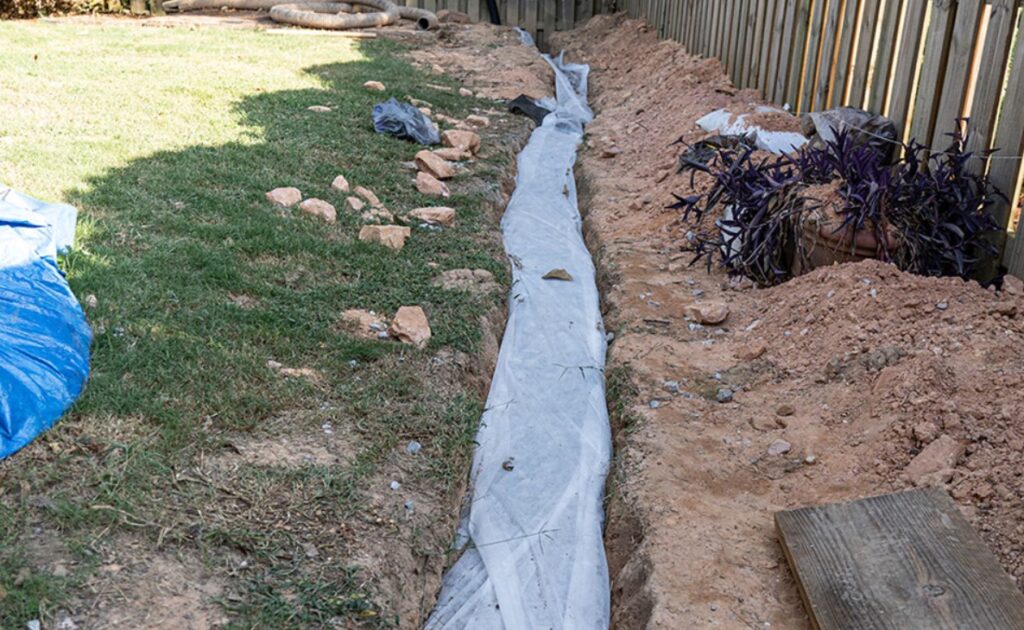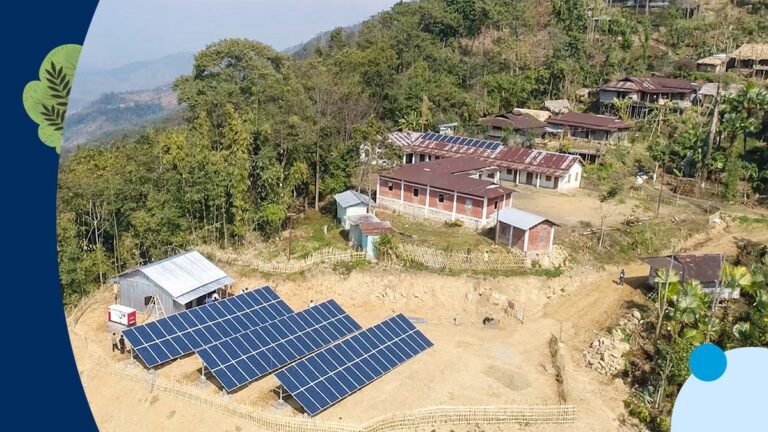The French word drainage means natural or artificial removal of water. For builders, drainage means a special system; a kind of method of collecting and removing groundwater from the foundation of the building and from the surface of the site. For summer residents, drainage is related to some bulk material that needs to be poured onto the bottom of containers for growing flowers so that the water in them doesn’t stagnate – and the plants can breathe.
What Is a French Drain System?

Drainage is vital for a plot with a house and a garden. Excess groundwater is insidious – it destroys the foundations of your house and all other buildings and doesn’t allow plants to grow properly. Under bad conditions, rains and downpours can destroy flower beds in one season.
However, making drainage using only artificial drainage systems and structures is also extreme. To build a French drain means to excavate and mount pipes and wells. First, you need to make a drainage project based on the hydrogeology data of the site. This must be done if the issues of extra groundwater and seasonal flooding are acute.
At the same time, it’s necessary to do everything possible to preserve the biocenosis of the site and the natural drainage system – for example, the prevailing successful terrain, where it goes. Maintaining a natural slope is sometimes the best solution. In addition, it’s also worth using biodrainage, that is, as early as possible to plant trees with a powerful root system that will intensively absorb water. It can be willows or pyramidal poplars.
The spring melting of snow and the first showers are often tons of water that can drown even the correct, high-quality storm sewer of the site. Since the storm sewer doesn’t replace the drainage and, in most cases, only helps it, then the drainage may not cope with the water. Note that storm sewer and French drainage are different systems, and the sewer is usually laid above it, so it’s impossible to combine them. Here, a lot depends on the terrain.
Types of Drain Systems

Drains of storm sewers are of two types – open and closed.
• A closed drain is an underground system of pipelines into which water enters naturally, through drain grilles, and goes down the slope of the pipes into a well, collector, quarry or ravine if you have any. Drains are often mounted on small plots having a linear, geometric landscape design. In such cases, pipes are hidden under lawns and flower beds, and beautiful wrought-iron grilles-water intakes can only decorate the design.
• An open drain isn’t drainage only but can also decorate the landscape. The flow channel is already known – it’s only necessary to deepen and form it. The trench for a French drain stream shouldn’t be deep – about 25-30 cm with gentle banks. The trench should be compacted. The level should be checked periodically to maintain a natural slope. This is especially important in cases where a dry stream is made slightly winding, along an exclusive natural line, for harmony with the landscape. In some cases, a perfectly straight stream looks great.
The end of the trench should be brought to the lowest point of the drain.
Among the disadvantages of closed drains, one can point out the fact that it’s necessary to make revisions and clean them. Moreover, if the underground channel is still clogged, excavation work is inevitable. A properly organized drainage drain will work for a long time but cleaning and revisions are vital for it more often than once a season. Pipes for storm drains, unlike drainage ones, don’t have perforations, and silting isn’t a threat to them. The receiving grilles are equipped with filters but the pipes still tend to get clogged – small debris, fallen leaves, bark and insects gradually penetrate into the pipelines.
Therefore, a lot of inspection wells are required, since they must be installed both at every turn and on straight sections so that the pipe can be cleaned. In building codes, the distance between inspection wells in a straight line is more than two meters. However, in order to check and clean pipes, it turns out that wells need to be installed often, and they won’t add any aesthetics to the design.
If there is some relief, it would be right to organize open storm drains. They will also be suitable for areas whose geometry is non-linear and require minimum excavation. Besides, artificial materials will hardly be needed, a thick polyethylene film will be enough for the bottom of the riverbed. Even if the main drain runs diagonally across the site, you can perfectly fit it into the landscape by arranging a dry stream.
How to Build a French Drain System

The prepared channel needs to be waterproof so that stormwater doesn’t soak into the ground but goes into the drain. A regular PVC film will be suitable. Former advertising banners, even parts of them, are an excellent economic option. When laying them with a good overlap, without saving material, you can get the required waterproofing effect, and the roots of plants won’t germinate through a thick film.
Then the most interesting process comes – it’s even close to the creative one. Collect beautiful stones and wash them thoroughly (preferably with soap). After all, dirt is not needed in the stream, and it will definitely settle from the stones. There is a huge variety of ready-made materials for the design of dry streams, of all colors, textures and styles, and it’s also possible to make bridges, crossings and curbs.
However, natural stones collected on your site and its surroundings are a great alternative to purchased materials. By placing large boulders in an order that seems chaotic, you can strengthen the bed and walls of the stream. It’s good to pour coarse sand on the bottom; crushed stone and river pebbles will look great as the main covering of the riverbed.
Thus, open drainage will play the role of a rocky, drying forest stream. If you don’t want to waste time and effort, you can contact PomWaterproofing, a professional in the field. The company will complete the work in time and help to choose budget material. Everything will be controlled so you won’t worry about the quality.







